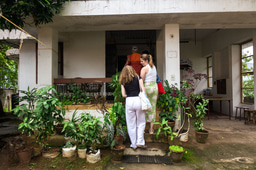Deep in the Archive

Doing archival research can be surprisingly tough, as I've learned throughout the six weeks in NYC. I was excited about diving into what I thought would be a goldmine of relevant documents at the Schomburg Center, only to discover that the archive didn't have much to offer on my topic. This forced me to change my research strategy and look elsewhere. On top of that, many databases I accessed had newspaper archives but frustratingly skipped the 1930s, the exact decade I needed. This gap left me scrambling to find other sources to fill in the missing pieces and made it really challenging to build a complete picture of the time. I am learning that archival research can be tedious and require lots of hours without much to show for it.
Another hurdle I faced was the contrasting narratives in Black and white newspapers from that era. White newspapers often blamed the health issues in 1930s Harlem on understaffing in medical facilities, while Black newspapers pointed to medical racism as the main cause. These differing accounts reflect the racial tensions of the time and make it tricky to piece together an accurate story. Balancing these perspectives is crucial for creating a well-rounded and truthful historical narrative, but it definitely adds a layer of complexity to the research process.





Please sign in
If you are a registered user on Laidlaw Scholars Network, please sign in